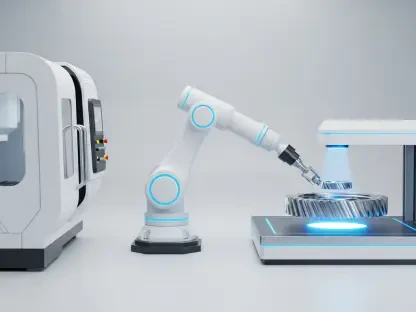It’s 2025, and a glucometer manufacturing company operates through its network of 15 smart manufacturing units worldwide. The company is digitally connected with various vendors and suppliers. One day, the test strip supplier is hit by a cyberattack, introducing harmful code into the supplier’s system and temporarily halting production. The malware then attempts to replicate itself across the networks of all partner companies connected to that supplier. This scenario, however surprising it may sound, is a reality that 79% of manufacturing firms believe is a critical risk for smart factories compared to their conventional counterparts.
With significant investments being poured into digitalization and Industry 5.0 by most manufacturing firms, the technical connectedness also reveals vulnerabilities that are now showing through the process gaps. This article delves into various aspects of cybersecurity in manufacturing, highlighting why it’s challenging to secure manufacturing environments, the diverse risks involved, and effective strategies to secure manufacturing against these ever-evolving threats.
1. Obtain Complete Visibility across Cyber-Physical Systems (CPS) in Your OT Environment
A comprehensive view of your operational technology (OT) and cyber-physical systems (CPS), including Internet of Things (IoT), Industrial Internet of Things (IIoT), and building management systems, is crucial for maintaining robust cybersecurity in a manufacturing setting. Achieving such visibility is one of the most intricate challenges for organizations. Manufacturers struggle with security because operational environments often depend on a range of legacy systems and specialized, sometimes outdated, technologies.
Addressing this issue involves implementing a CPS protection platform that offers customizable discovery methods. Companies can thus ensure that no part of the network goes unchecked. These discovery methods can be customized to suit the unique needs of any manufacturing environment, making it far easier to monitor and secure every connected system. This contributes significantly to identifying, tracking, and logging network traffic, and understanding normal operational behaviors, which are fundamental for spotting anomalies or signs of potential cyber threats.
2. Integrate IT Tools and Processes with CPS Seamlessly
Once comprehensive visibility is achieved, the next step in incorporating cybersecurity into manufacturing is integrating IT tools and workflows with CPS. IT and OT environments often rely on outdated, proprietary technologies that standard IT solutions cannot easily secure. Many OT devices cannot be safely patched or scanned due to the risk of operational downtime, further complicating this integration.
However, with purpose-built CPS security tools, organizations can bridge the gap between IT and OT without disrupting daily operations. Such tools allow IT systems and processes to extend into OT environments, thereby improving risk management and fostering greater visibility. This collaborative integration enhances the cyber resilience of manufacturing operations, ensuring better protection against potential threats by leveraging the strengths of both IT and OT.
3. Extend Security Governance from IT to OT
Traditionally, OT environments have not been subject to the same rigorous security measures as IT due to a historical focus on operational efficiency over cybersecurity. However, extending IT security governance into the OT space is essential for ensuring unified cybersecurity protocols across an organization. This move ensures that governance standards are consistently applied, filling security gaps and providing a more resilient defense against cyber threats.
A shift from isolated security practices to a unified approach helps organizations achieve both operational and cyber resilience. Over time, organizations that expand IT security governance to include OT can anticipate fewer vulnerabilities, making them better prepared to handle potential threats. This unified governance framework becomes a cornerstone for more robust, integrated cybersecurity strategies within manufacturing environments.
4. Enforce Strong Encryption and Access Control Measures
Interconnected networks and smart devices have transformed manufacturing operations, but they also introduce significant security risks if not properly protected. Companies must adopt robust encryption measures to safeguard data in transit and ensure the integrity of real-time data. Industry-standard encryption algorithms should be used along with advanced access control mechanisms like digital signatures and cryptographic hashes, guaranteeing that only authorized personnel can access critical systems.
Proactive measures like these mitigate the risks of unauthorized access and data breaches. By securing data communication channels and ensuring that all data transfers are encrypted, manufacturing firms can protect sensitive information from being intercepted or manipulated, thereby securing the overall manufacturing process.
5. Adhere to Industry Standards and Regulations
As organizations adopt new technologies in their smart factories, compliance with relevant industry regulations and standards becomes imperatively vital. Non-compliance not only exposes companies to legal risks but also increases their susceptibility to cyber threats. Adhering to recommended guidelines helps firms develop and implement best practices for cybersecurity in the manufacturing industry, ensuring long-term security and operational continuity.
By staying updated with regulatory requirements and incorporating them into their security protocols, manufacturers can better protect their systems from vulnerabilities and breaches. Compliance with industry standards also helps establish a baseline of cybersecurity best practices, setting up firms for sustained success and resilience.
6. Deploy Intrusion Detection Systems
To effectively guard against cyberattacks, it is paramount to detect threats before they infiltrate the network. Deploying advanced intrusion detection systems (IDS) allows companies to continuously monitor their data flows, flagging any abnormal behaviors or potential vulnerabilities. Leveraging artificial intelligence (AI) and machine learning, these systems can also analyze historical data to predict and prevent future threats.
This proactive approach enables real-time threat detection and helps minimize the risk of extensive damage by neutralizing threats as soon as they are detected. Advanced IDS implementations offer a robust layer of defense and ensure that threats are swiftly addressed, reducing the impact on manufacturing operations.
7. Educate Employees and Develop a Comprehensive Recovery Plan
Moreover, the integration of AI and machine learning into IDS enables these systems to become smarter over time. As they process more data, their algorithms improve, making them more efficient in detecting and responding to threats. This continual learning process is vital in keeping up with the ever-evolving nature of cyber threats.
In summary, deploying advanced IDS with AI and machine learning capabilities offers a comprehensive defense mechanism. It not only focuses on real-time detection but also on long-term threat prevention, ensuring that the integrity and security of the network are maintained. By taking a proactive stance, companies can better safeguard their operations and reduce the likelihood of significant cyber incidents.









